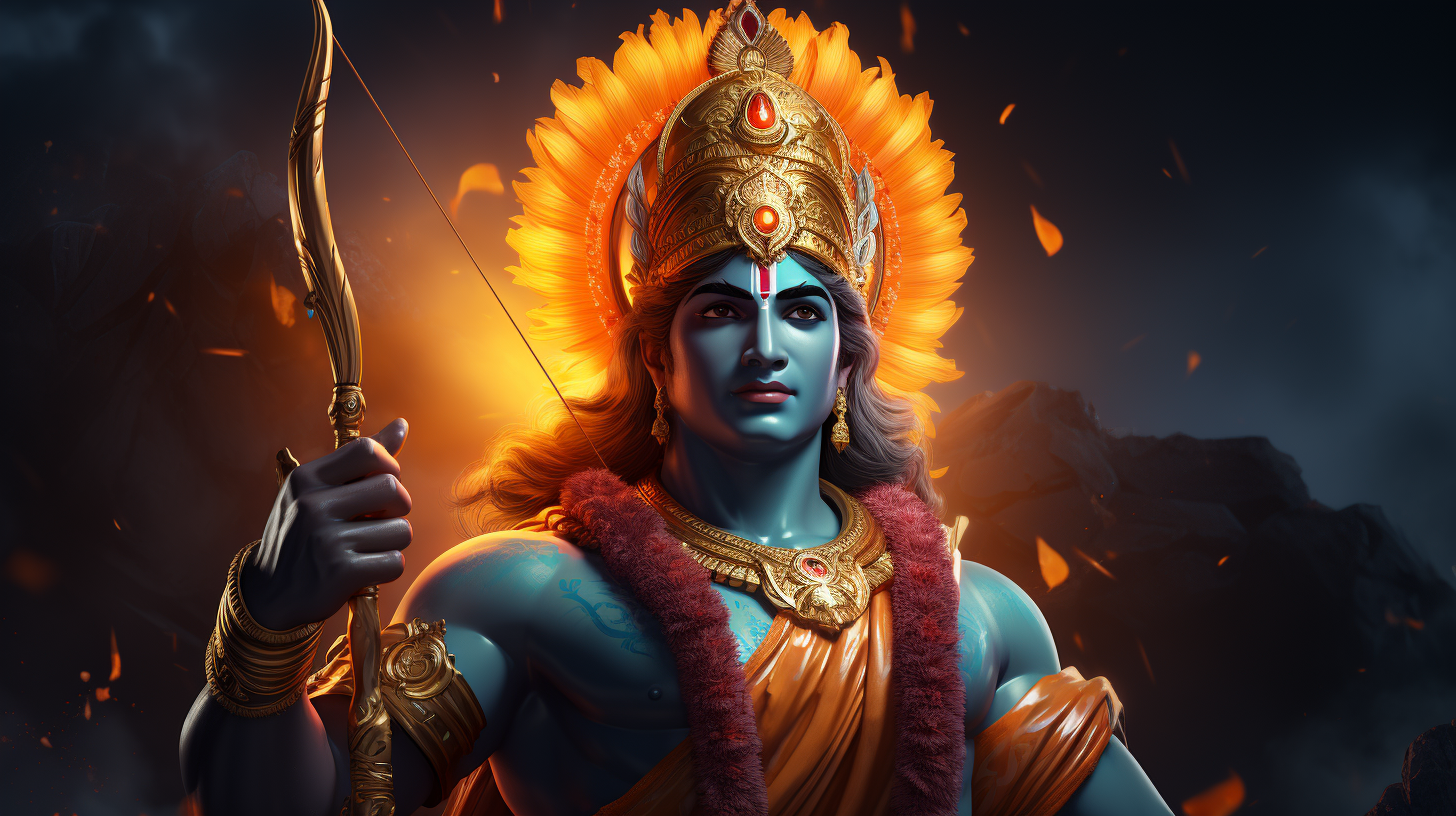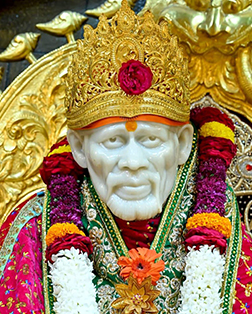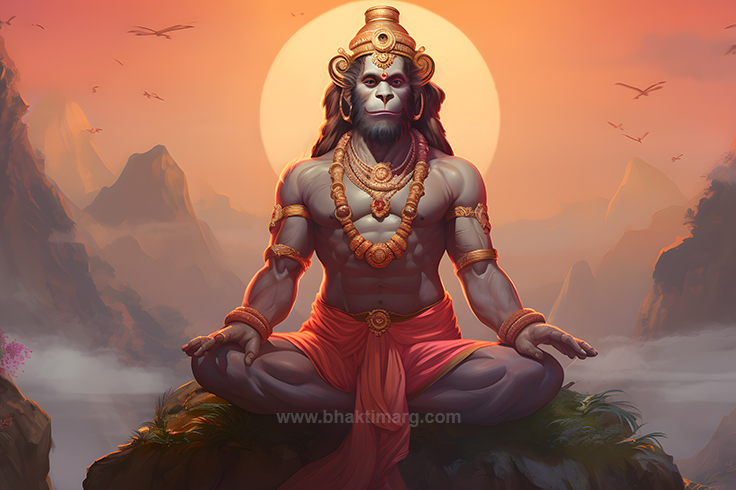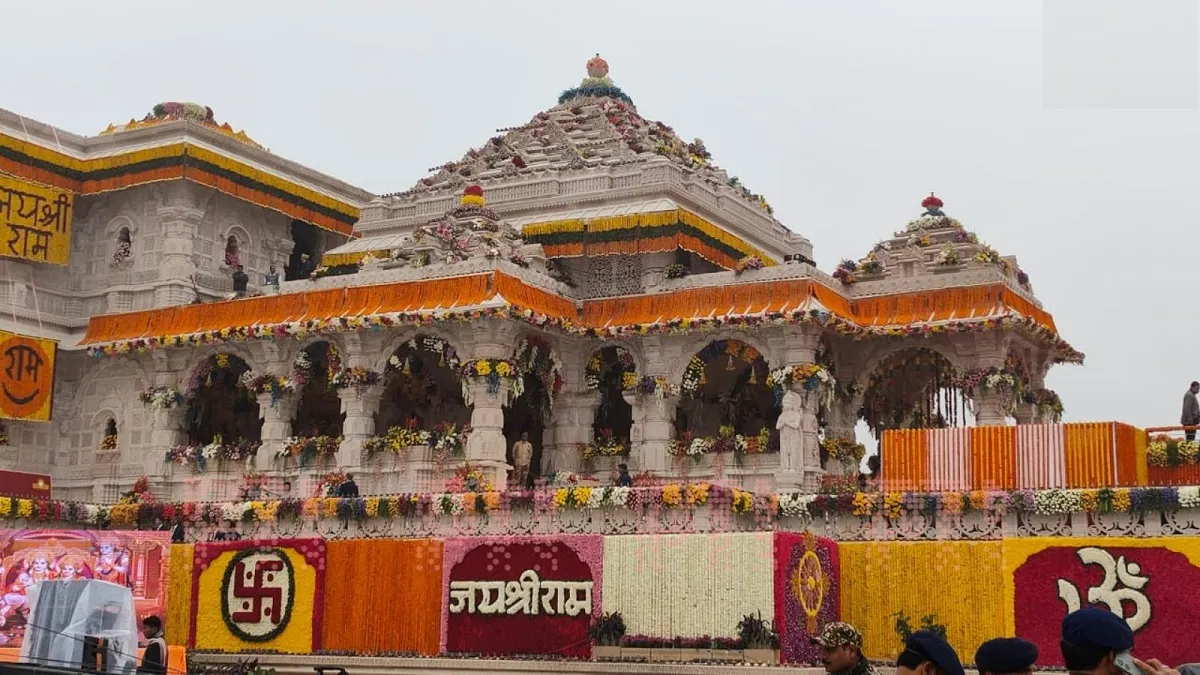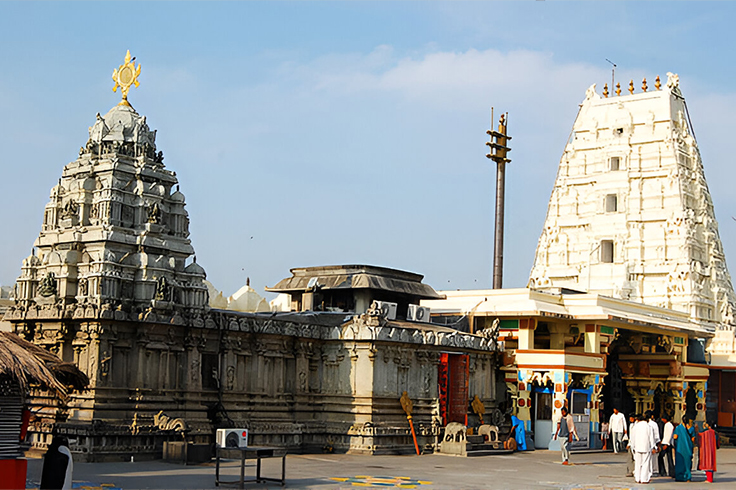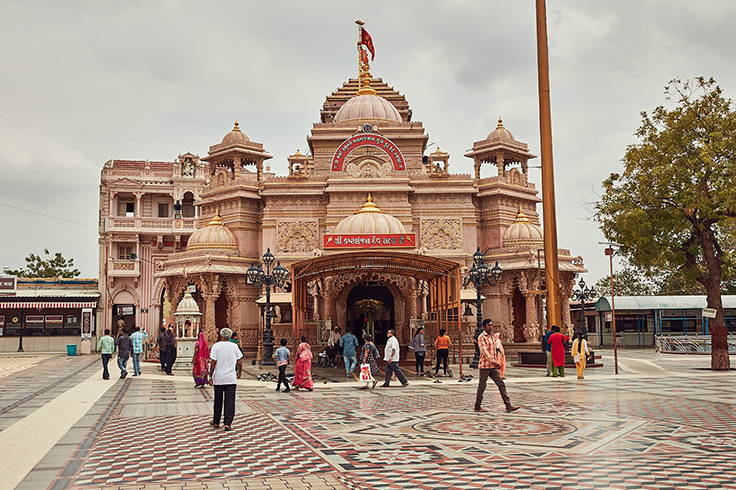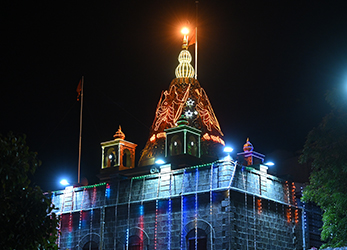
The Story Behind Ganesh Chaturthi: History, Significance
In Hinduism, Shree Ganesh ji is the most celebrated and favorite god, and the celebration of Ganesh Chaturthi is practiced with great pomp in some parts of India and some foreign countries. This festival is also famously called the Gauri Ganesha festival in Maharashtra and is marked by elaborate rituals, grand processions, and a deep sense of devotion. Vinayaka Chaturthi is another name for the festival and is celebrated in honor of Lord Ganesha Vinayak being his birth name, he is denoted as the elephant-headed god of wisdom, prosperity, and good fortune. But what lies behind this vibrant celebration? What is the story behind Ganesh Chaturthi? In this blog let’s delve into the history and importance of the Ganesh festival, exploring its origins, evolution, and cultural impact.
Ganesh Chaturthi 2025, also referred to as Vinayaka Chaturthi, will be observed on Wednesday, 27th August 2025. This auspicious festival celebrates the birth of Lord Ganesha, the elephant-headed deity honored for his role in removing obstacles and blessing devotees with wisdom and prosperity.
Legends Related To Ganesh Chaturthi History:
- One of the famous stories about Ganesh Chaturthi is regarding the birth of Lord Ganesha, the son of Lord Shiva and Goddess Parvati, who is one of the most revered deities in Hinduism. The story of his birth is as fascinating as the festival itself, according to scriptures goddess Parvati created a baby from the sandalwood paste she used for her bath. She breathed life into the figure naming him ‘Vinayak’ the wise one, and one day she assigned him the task of guarding her door while she bathed. Unaware of reality both got into a fight and Shiva, beheaded him in a fit of rage when Parvati learned of this, she was devastated. Shiva attached the elephant’s head to Ganesha’s body, bringing him back to life. From that day on, Ganesha was revered as the remover of obstacles and the god of new beginnings. And to honor Shree Ganesh ji he was given the boon of becoming the first praised god and for 10 days every year people bring their favorite lord wishing his vicinity with them conducting Ganpati Chaturthi Pooja
- Another story about the Ganesh Chaturthi celebration is accounted at the time of Mahabharat, it is said that Lord Ganesh wrote the whole Mahabharat recited by Valmiki Rishi. During this creation there was a deal between them, Ganpati said that the recitation should be done in one go the moment Rishi Valmiki stooped he would not continue the scripture. Hence the continued recitation went on for 10 to 11 days and after it was done Rishi noticed Ganesh ji being stoned and burning covered with mud so he submerged him in water to clean him and cool him off. This started the tradition and celebration of Ganesh Chaturthi where the lord is kept at devotees’ humble abode and submerged in water after 10 or 11 days signifying his return to his godly home in Kailash

- Another story behind the Ganesh Chaturthi celebration rules followed is one must not see the moon, owing to this it is a story where the Moon God offended Lord Ganesh. This instance is mentioned in scriptures as when Ganpati was returning from the feast on his vehicle Mushak, he fell off, all his ladoo rolled down the hill, and Chandra Dev laughed at him, calling him names and making fun of his weight. Owing to this the lord got angry and cursed him to disappear but when Chandradev accepted his mistake as reminded it would affect the world cycle, lord Ganesha then blessed him that he would wax and wane creating a cycle but if anyone saw him during Ganpati Chaturthi Pooja it would bring him bad luck so people avoid looking at the moon during this period, this story behind Ganesh Chaturthi practice is most often called as a diminishing belief yet followed by some
- In Maharashtra, this festival is celebrated as the Gauri Ganpati festival observed to honor Goddess Gauri, who is considered a manifestation of Goddess Parvati, the mother of Shri Ganesha. The festival symbolizes the arrival of prosperity, fertility, and marital bliss, according to tradition, Gauri is invited into homes, believed to bring blessings of wealth and well-being along with Ganpati. The Gowri Ganesha celebrations typically last for two to three days, beginning with the installation of beautifully adorned idols of Gauri. Women, especially married ones, play a central role in the rituals, which include offering traditional foods, performing aarti, and singing devotional songs. The significance of Gauri Ganesha lies in its deep connection to family, women pray for the well-being of their families and to strengthen their marital bonds. The festival culminates with the immersion of the Gowri Ganesha idols, accompanied by prayers and songs, symbolizing her return to Mount Kailash with Lord Shiva and Ganesha
- Another lesser-known legend associated with Lord Ganesha’s wisdom is the tale of Ganesha and Kubera. In an effort to flaunt his immense wealth, Lord Kubera—the deity of prosperity—once hosted a lavish feast and invited Lord Ganesha as the guest of honor. However, Ganesha’s appetite was insatiable—he devoured everything, including the utensils and furniture. Alarmed, Kubera ran to Lord Shiva for help. Shiva offered Ganesha a simple handful of roasted rice, which satisfied him. This story emphasizes Ganesha’s role as a destroyer of arrogance and pride, reinforcing his association not just with prosperity but with humility and balance.
Historical Evolution of Ganpati Chaturthi Pooja
The importance of the Ganesh festival has its roots in ancient India where devotees invited the lord to their home but large-scale celebrations of the Ganesh Chaturthi festival as we know it today were popularized during the Maratha reign in the 17th century, particularly under the rule of Chhatrapati Shivaji Maharaj. It was promoted as the means to foster unity and nationalism among his people, the Maratha rulers celebrated Ganpati Chaturthi pooja with great pomp, making it a public event that brought together people from all walks of life.
However, the Ganesh Chaturthi history continues, though its prominence waned during the British colonial period, as public gatherings were discouraged. In the late 19th century Lokmanya Bal Ganadhar Tilak propagated about Ganesh Chaturthi and revived the large-scale celebration. Tilak, often referred to as the “Father of Indian Unrest,” recognized the importance of the Ganesh festival as a tool for social and political mobilization. In 1893, he organized the first public Ganesh Chaturthi celebration in Pune, encouraging people to gather and worship Lord Ganesha. Tilak’s vision was to use the festival to promote the Swadeshi movement and to unite people against British rule, by making it a community event. Thus the story behind the Ganesh Chaturthi mass celebration was to bring people from different castes, religions, and social backgrounds together under one roof fostering a sense of nationalism and cultural pride.
It is also believed that Ganesh Chaturthi is astrologically significant. The fourth day of the waxing moon in the Hindu month of Bhadrapada (Chaturthi Tithi) is considered highly auspicious for invoking Ganpati’s blessings, especially for removing obstacles related to business ventures, education, and travel. According to Vedic astrology, worshiping Ganesha on this day neutralizes the ill effects of Ketu (a shadow planet), which is known to cause confusion and delays in one’s life path. This makes Ganesh Chaturthi not just a cultural festival but a spiritual opportunity for cosmic alignment.
Ganesh Chaturthi is also widely celebrated outside India, particularly in countries with significant Indian diaspora. Countries like Nepal, Mauritius, Trinidad and Tobago, Fiji, the UK, and the USA host elaborate Ganesh Utsav celebrations. In places like Toronto and New Jersey, large-scale public Ganesh festivals are organized by Indian cultural organizations, complete with processions, cultural programs, and eco-friendly immersion practices. This global presence highlights the universal appeal of Lord Ganesha and the unifying power of Indian tradition beyond borders.

About Ganesh Chaturthi Rituals and Celebrations
It is a ten-day festival beginning on the fourth day of Bhadrapad according to the Hindu lunar calendar which typically falls in August or September. The celebration of Ganesh Chaturthi starts with installing Ganesha idols in homes and public pandals (temporary structures) often made of clay, and intricately decorated. The rituals begin with the “Pranapratishtha,” a ceremony in which the deity is invoked into the idol. This is followed by the “Shodashopachara,” or the 16 forms of paying tribute, Devotees chant Vedic hymns and perform aarti, and the Ganesh Chaturthi mantra is sung with waving lighted lamps before the deity, to honor and seek blessings from the Lord Ganesha.
In 2025, Ganesh Chaturthi will begin on Wednesday, 27th August and, following tradition, will be celebrated over 10 days. The grand culmination of the festival, known as Ganesh Visarjan, will take place on Friday, 6th September 2025. On this day, devotees bid an emotional farewell to Lord Ganesha, immersing his idols in water with hopes that he returns again next year to bless them with renewed joy, success, and harmony.
On Anant Chaturdashi, the final day Shree Ganesh Ji’s idol is taken in a grand procession to a nearby river or sea for immersion, a ritual known as “Visarjan.” The immersion symbolizes the cycle of birth and death and the belief that Lord Ganesha returns to his heavenly abode, taking with him the misfortunes of his devotees.
Also check out: Popular Ganesh Chaturthi Songs and Bhajans
In recent years, technological integration has changed how Ganesh Chaturthi is celebrated. Devotees now participate in virtual darshans, live-streamed aartis, and even conduct online pujas via apps and websites. Digital Ganesha idols and augmented reality (AR) installations have also gained popularity in urban areas, particularly among the youth. This shift represents the fusion of tradition with modernity, making the festival accessible to those who are physically distant or constrained by space and resources.
The Importance of Ganesh Festival
- To talk about Ganesh Chaturthi’s significance in the lives of Hindus, both spiritually and culturally is unsurmountable, the Lord is revered as the remover of obstacles and the god of wisdom, prosperity, and good fortune and on the occasion of Gauri Ganesha he is said to live with his devotees along with his divine mother. Devotees can feel the presence of Lord Ganesha and seek his blessings making Ganesh Chaturthi an auspicious time for new beginnings.
- Another importance of the Ganesh festival lies in its representation of the cycle of creation, preservation, and dissolution. The process of making the idol from clay, its worship, and its eventual immersion in water symbolizes the transient nature of life and the importance of letting go. It serves as a reminder that everything in life is temporary and that one must embrace change with grace, and goodbyes with sadness yet light heart
- Culturally, Ganesh Chaturthi’s importance is the time it provides for community bonding and social harmony. The public celebrations bring people together, transcending barriers of caste, class, and religion, promoting a sense of unity and collective joy, and fostering a spirit of inclusiveness and brotherhood
- The Ganesh Chaturthi history was glorious but the present is concerning as environmental concerns are surfacing, particularly the pollution caused by the immersion of non-biodegradable idols in water bodies. To address this, there has been a growing movement towards eco-friendly celebrations of Ganesh Chaturthi, like opting for idols made of clay, natural dyes, and plantable materials that dissolve harmlessly in water. Some communities even organize artificial immersion tanks to minimize the impact on natural water bodies. In addition, there is a push for reducing the use of plastics and promoting sustainable practices, such as using organic decorations and composting floral offerings.
Ganesh Chaturthi is a festival that blends spirituality, culture, and community, the grand celebration at many pandals, and the revered Shri Siddhivinayak Temple in Dadar, Mumbai is a scene to visit for one to gain the essence and importance of the Ganesh Festival.
The rich Ganesh Chaturthi history and deep significance continue to resonate with millions of devotees as we celebrate this joyous occasion, it is essential to remember the values it represents unity, wisdom, and respect for the environment. By embracing these principles, we can ensure that the spirit of the story behind Ganesh Chaturthi will remain alive for generations, giving them timeless lessons.
Environmentally, the Ganesh festival has inspired a broader movement of eco-conscious celebrations in India. Not only are people turning to clay idols and natural colors, but some artisans now craft seed Ganesha idols—made with clay mixed with plant seeds. Once immersed, these idols dissolve and germinate into plants. This practice aligns the spiritual meaning of rebirth and creation with tangible ecological benefits, allowing devotees to not just celebrate but also give back to nature. This green Ganesh movement is helping raise awareness about sustainable devotion.
Conclusion
Ganesh Chaturthi 2025 will be celebrated from 27th August to 6th September, honoring Lord Ganesha as the remover of obstacles and the bringer of wisdom and prosperity. This vibrant 10-day festival blends devotion, culture, and growing awareness of eco-friendly celebrations. As we welcome Ganpati Bappa into our homes and hearts, let us also embrace the deeper values of unity, gratitude, and spiritual renewal.




